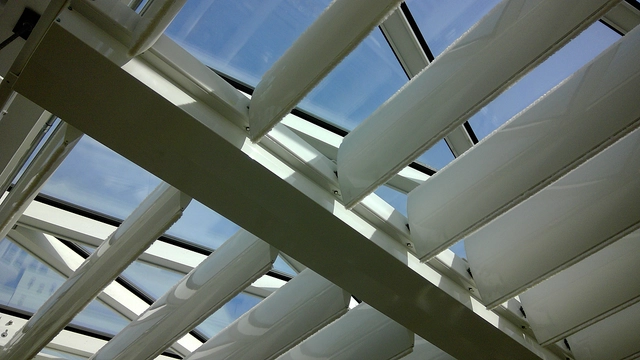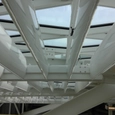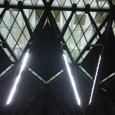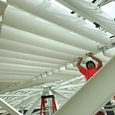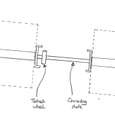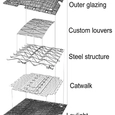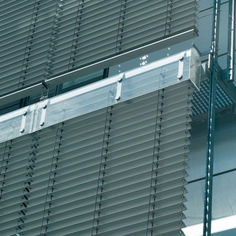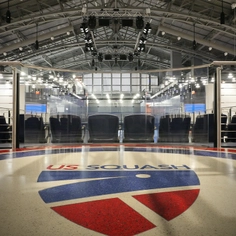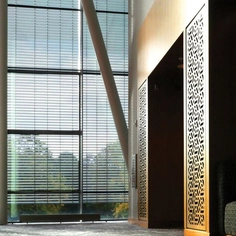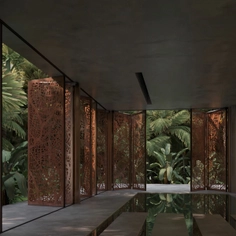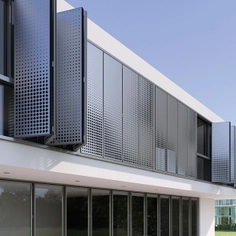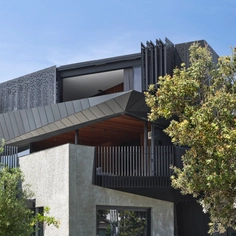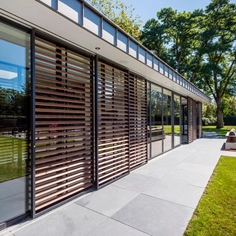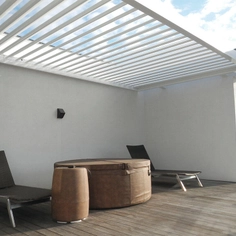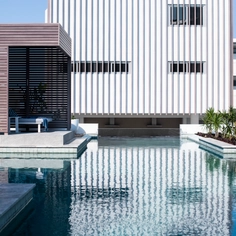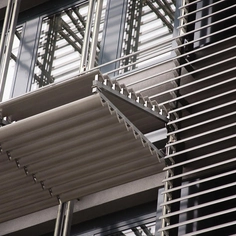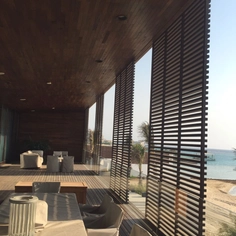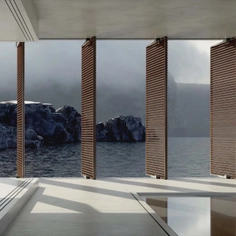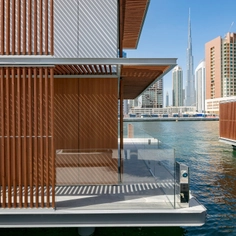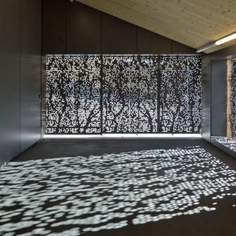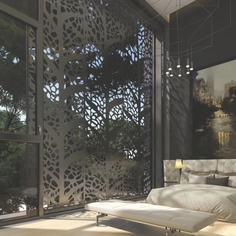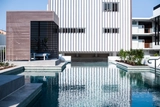-
Use
Daylight control, motorised louvers -
Applications
Public Building -
Characteristics
180° louver rotation, irregular shaped skylights, bespoke solution
A temporary home was required for the parliamentary debating chamber during the renovations of the Canadian Parliament Building in Ottawa. The solution to convert the West Block courtyard into a legislative chamber brought about a unique set of challenges. The exterior courtyard was roofed to create a weather-proof space, the architects, AFGM designed a multilayer roof structure comprising a supporting steel structure, outer glazing, an access catwalk, and an inner laylight to create a bright, naturally day-lit space.
The functional requirements of the debating chamber include the need to televise proceedings. The natural daylighting was desirable but specialized controls were needed to ensure that direct sunlight would not strike the debating chamber during the day. The specific requirements of this project required a bespoke solution and Draper was selected to work with the façade engineering team to create a solution with customized motorized louvers.
The main challenges were:
- Motorized louvers rarely rotate more than 90 degrees. But the project required a drive mechanism that could rotate the louvers through 180°, allowing them to continuously track the sun throughout the day.
- The louver system needed to cope with the irregularly shaped skylight elements.
- The system needed to allow adjustments to run on a number of different slopes.
Draper’s engineering team collaborated closely with the project team to meet these challenges, using 3D printers and prototyping to ensure the design was successfully integrated with the structure. This prototyping process allowed issues of noise, maintenance, and operation to be fully addressed prior to installation. The final louvers were built and tested in the Draper factory before being shipped to Ottawa for installation.
The final louver design comprises a drive bar with sections of rack-mounted at each louver location. These racks engage toothed wheels mounted on the louver shafts. Consequently, as the actuator drives forward and back, the louvers are rotated. The louvers slowly rotate 180 degrees every day during daylight hours, then retract to their original position overnight. Adjusting the actuator stroke allows the amount of louver rotation to be increased or decreased as required.
The final solution is elegant and discreet. It is critical to the successful operation of the debating chamber but is virtually invisible from the interior and exterior of the space.


